Great Camp Sagamore
Thursday, Sept 7, 2006I had no very good idea what we were in for when Denise announced this morning we were headed for Sagamore. A quick look at the brochure convinced both me and Vance we were headed for yet another big house built by rich people. Boring!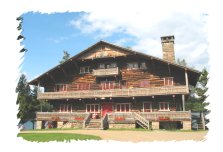
Not quite. Although Great Camp Sagamore was ultimately owned by the Vanderbilts, it was originally built by W.W. Durant in 1897 as a prototype of what came to be known as the Adirondack Camps. By mixing a log cabin with a Swiss Chalet, using indigenous materials, Durant created the architectural style that now is associated with the rustic Adirondack design.
Although Durant ultimately over extended himself and failed financially before reaching his ultimate goal of being ‘the’ developer for the ultra-rich in this area, he left a lasting legacy with his designs. The rustic Adirondack look has been copied widely, including by the National Park Service.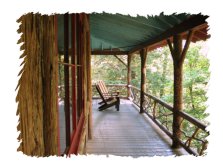
The ‘Camp’ once consisted of 60+ structures in it’s heyday, ranging from a very nice henhouse, up to the Main Lodge overlooking pristine Lake Sagamore. Tucked into the wooded peninsula was a Gentleman’s Club, a bowling alley, casino, dining hall, servants quarters, maintenance structures, a very nice hen house, and of course, cabins for all of the high society visitors.
The camp is today a National Historic Landmark, both for the historical significance of the structures, and their role in defining a widely adopted architectural style. When members of the ‘gilded age’ society were seeking refuge from their industrial urban environment, they desired a return to a more natural setting. Sagamore was one of the first large scale attempts to provide such a retreat. The success of the effort can be seen today in how popular the Adirondack ‘Camp’ style is today.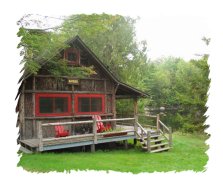
For the Vanderbilts, the idea of returning to nature was only a romantic ideal. The reality is that most of the up to date comforts available only to the very rich: hot and cold running water, flushing toilets, gas (and later electric) lighting - were available at Sagamore, despite its remote location in the heart of the Adirondack Park Wilderness area. It took a year round staff to manage the property, and during the 6 or so weeks in the summer when the camp was used by the Vanderbilts and guests, a full compliment of servants would accompany them.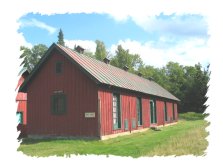
A brief note about the area – a large portion of the Adirondack area was set aside for protection by the State of New York in the 1890’s, and is widely considered a model for the National Park System implemented by Theodore Roosevelt when he was president. The park is unique in that it incorporates an area that contains both public and private land. The state held land is designated and managed as wilderness, which does not allow maintenance of any man made structures. This proved to be a problem when the state found itself owning a portion of the camp. Prohibited by law from maintaining the structures, the ‘servants’ side of the camp began to fall into ruin. It took a land swap authorized by an amendment to the state constitution to restore all of the structures still remaining under control of the non-profit that runs Sagamore today.
As you can imagine, there are tensions between land owners within the park boundaries, and the agency that manages the park, the Adirondack Park Administration (APA). The APA tends to err on the side on conservation, and enforces strict zoning and restrictions on subdividing property. In an area that is weak economically outside of the tourism business, this is a source of constant conflict between those who live there and wish to develop the land, and those charged with protecting it for future generations. I found a lot of parallels to what is happening in our corner of the Great Smoky Mtns, where local governments are just now (almost too late) slowly waking up to the fact they need to put a brake on the unchecked development now littering the mountainsides. Once we get back home, I hope to learn more about the guidelines the APA uses for management, to see if there are lessons that could be learned by our local governments in western North Carolina.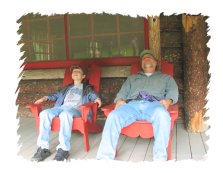
Today, you don’t have to be a descendent of the Vanderbilt family to enjoy Camp Sagamore. On top of the guided tours available of the property, there are numerous educational programs available. Sagamore also hosts modern day guests – Grandchildren/Grandparent’s camp, Elderhostel, Adirondack Boat Building School and other craft, history and outdoor programs are available. The cabins may also be rented for retreats and family events.
Vance seemed to grasp the idea quickly that the Vanderbilts had it pretty good. He’s quite familiar with the Biltmore House in Asheville, built by one of the Vanderbilt heirs. Vance made multiple comments on ‘it’d be nice to live here’ with a big grin on his face, and we all agreed it’s an enchanting setting.
It was quite interesting to see where the whole Adirondack style got started, and the history behind it. Without Sagamore: the idea of going to camp in the summer may never have started; Dirty Dancing might not have been filmed and Patrick Swayze could still be waiting tables; Smith & Hawkins might be an importer of Persian Rug; and the grand National Park lodges of Yellowstone, Grand Canyon and Crater Lake might look like 1950’s era Holiday Inns.

Vance: Sagamore was built by William Durant in the late 1800’s. Later it was purchased by the Vanderbilts who also owned the Vanderbilt Mansion and later made the Biltmore House. The Biltmore House is about an hour away from our home. Once a friend’s dog died and the Vanderbilts had to bury the dog at Sagamore. The dog’s name was Inky.
The men had their own hangout and they hired a guide to bring a buck close so they could shoot it. Some were really clumsy - they go like” Oh shoot, I missed”. One man was so clumsy he accidentally shot off the rack, thus ruining the trophy.
All of the buildings were old and wrinkled, but nicely furnished inside. I loved the scenery of the lake outside. I didn’t like them not having trails to the creek, and they didn’t have enough waterfalls.
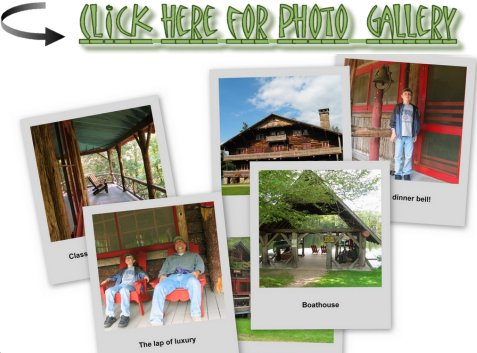







<< Home